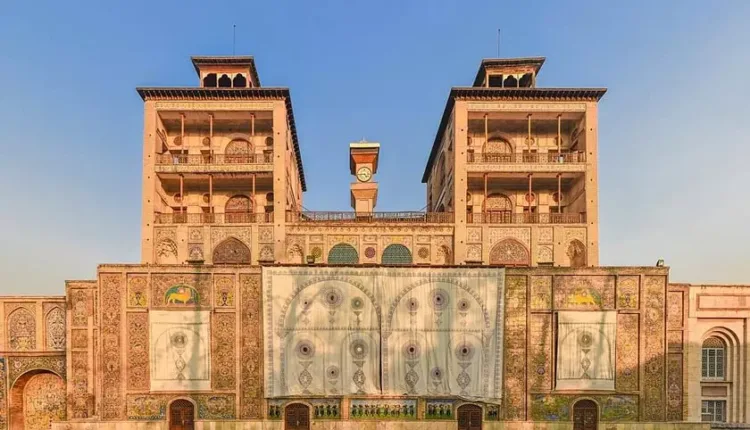Golestan Palace: A Historical Jewel Amidst Modern Tehran
Golestan Palace
Golestan Palace, one of Iran’s most iconic UNESCO World Heritage sites, is a captivating destination that showcases unique architecture and exquisite decorations. Its unparalleled beauty provides an ideal backdrop for photography enthusiasts seeking to capture stunning images.
Introduction of Golestan Palace
This remarkable structure was inscribed on Iran’s National Heritage list in 1955 and later added to UNESCO’s World Heritage list in 2013. In addition to its architectural significance, Golestan Palace has witnessed important historical events, making it a living testament to Iran’s rich heritage.
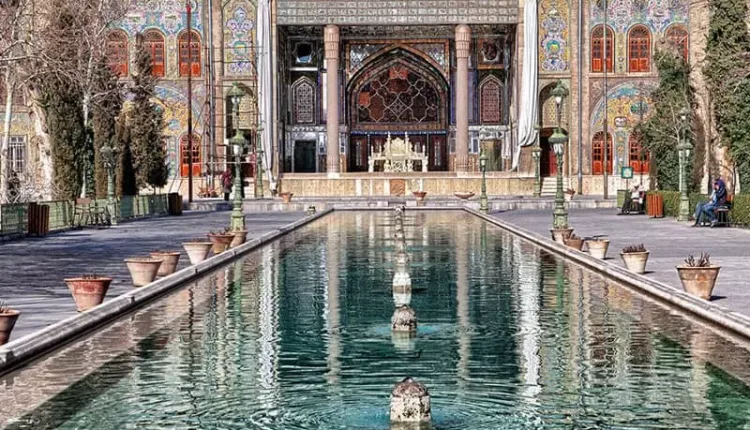
Visiting Hours of Golestan Palace
Visiting Hours of Golestan Palace Golestan Palace is open to visitors from 9 AM to 7 PM, with the last ticket sold at 5:15 PM. However, please note that the palace is closed on specific dates, including the anniversary of Imam Khomeini’s departure (14 Khordad), the martyrdom of Imam Ali (21st of Ramadan), the commemoration of Ashura (9th and 10th of Muharram), Arbaeen (20th of Safar), the demise of Prophet Muhammad (28th of Safar), the martyrdom of Imam Jafar Sadiq (25th of Shawwal), and Nature Day (13th of Farvardin).
Ticket Prices for Golestan Palace
Ticket Prices and Contact Information
- The entrance fee for Iranian visitors to Golestan Palace is currently 46,000 Tomans (as of 2023).
- You can contact the palace at 021-33956662 for further inquiries or ticket reservations.
- Golestan Palace’s address is at 15 Khordad Street, North Side of Arg Square, Tehran.
- For precise location details, you can refer to the official website at ir.
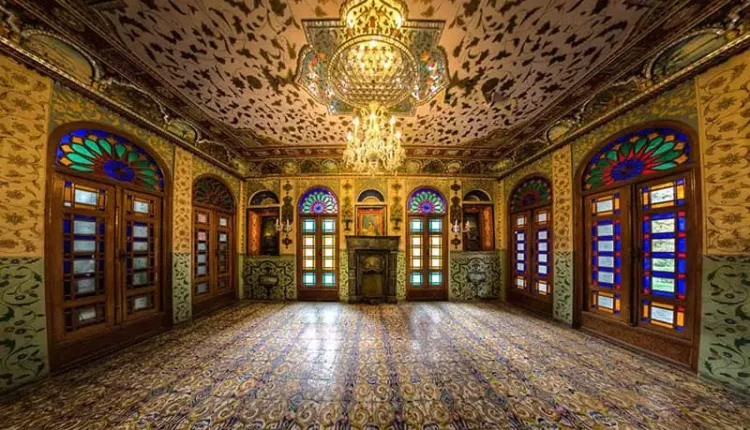
Historical Background of Golestan Palace
The origins of Golestan Palace can be traced back to the Safavid era, although the most significant historical period of the palace is associated with the reign of Agha Mohammad Khan Qajar.
In 1796, Agha Mohammad Khan established Tehran as the capital and chose Golestan Palace as his residence, which elevated the palace’s importance as the seat of Qajar power.
Naser al-Din Shah’s Influence
Naser al-Din Shah Qajar also held his coronation ceremony at Golestan Palace and became the first Iranian monarch to visit Europe.
This exposure to European culture influenced the architectural changes in the palace, giving it a distinct blend of Persian and European styles. During the Qajar era, Golestan Palace served not only as a royal residence but also as a center for artistic education and the development of various crafts.
Golestan Palace underwent minimal changes under the rule of Mozaffar al-Din Shah, Mohammad Ali Shah, and Ahmad Shah Qajar.
However, this period is significant due to historical events such as the Constitutional Revolution and its profound impact. Even during the Pahlavi era, Golestan Palace witnessed some alterations.
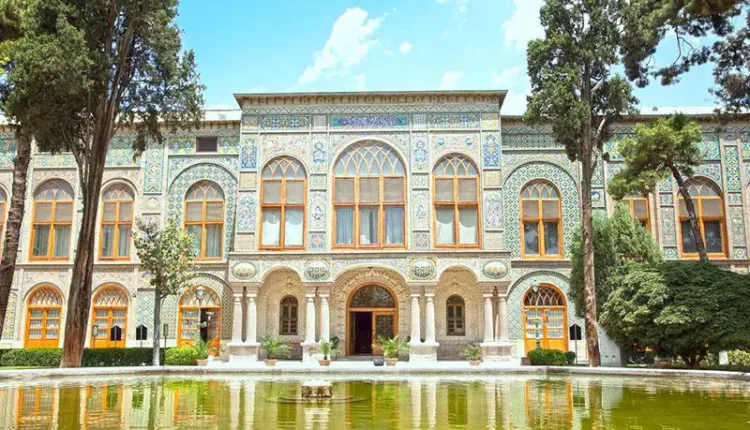
Golestan Palace: A Historical Jewel Amidst Modern Tehran
Golestan Palace, with its rich history spanning over four centuries, remains one of Iran’s unique historical complexes.
Despite the surrounding modern and impersonal constructions, it continues to stand as a testament to Iran’s architectural heritage. This palace has witnessed significant events that make it an invaluable document of Iran’s history.
The Government Pavilion (Takyeh Dowlat) was Built by the order of Naser al-Din Shah in 1905; the Government Pavilion is a distinct structure within Golestan Palace.
It stands in the southeastern corner, adjacent to Shams-ol-Emareh. The architectural style of the Government Pavilion differs from other buildings in Tehran during that era.
Some researchers believe that the design of the Pavilion was inspired by Western theaters and amphitheatres, while others attribute it to the influence of Iranian caravanserais and takyehs (religious gathering places).
Government Pavilion
The exterior façade of the Government Pavilion featured an octagonal shape, while the interior took the form of a cylindrical structure. It had separate entrances for men, women, and the king.
Over time, with the rise of Western influence and the emergence of new forms of entertainment in Iran, the Government Pavilion lost its prominence. Despite its historical significance as the largest theater in the country, it remained neglected until its demolition in 1946 to make way for a branch of the National Bank.
The Foreign Mansion (Emarat Khorooji) Located in the northern side of Shams-ol-Emareh, the Exit Mansion divided the Golestan Garden into two parts. It was constructed during the reign of Agha Mohammad Khan until Fath Ali Shah and consisted of the Museum Room, Mirror Hall Treasury, and the Royal Wardrobe.
During Naser al-Din Shah’s reign, the mansion was demolished to create a museum resembling those of European countries. However, a large swimming pool replaced it and served as a green space during the early Pahlavi era.
It is believed that the name “Golestan Palace” derived from the Hall of Golestan (Talar-e Golestan), which gradually became the collective name for the entire complex.
The Interior and Nasiri Dormitory Naser al-Din Shah made significant changes to the Golestan Palace, including the expansion of the Interior Mansion. This structure was built upon the ruins of the Dolmeh Baghcheh Palace, which had belonged to the Ottoman Sultan Osman II and was later known as Nasiri Dormitory. During the Pahlavi era, it was demolished to eradicate signs of sensuality and replaced by government ministry buildings.
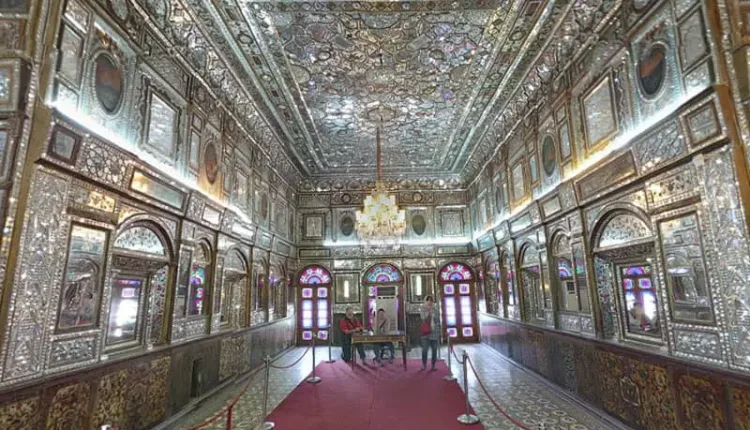
Architecture Style of Golestan Palace
Architecture of Golestan Palace Golestan Palace is a collection of historical buildings and royal halls set within a garden. The architectural style initially followed Iranian traditions but underwent transformations influenced by cultural, political, and commercial interactions with European countries. As a result, it exhibits a blend of Iranian and Neoclassical European architectural styles that captivate any observer.
One of the highlights of Golestan Palace is its exquisite tile work. These intricate tiles depict various themes such as myths, hunting scenes, banquets, romantic motifs, battles, landscapes, historical monuments, kings, courtiers, governmental figures, religious symbols, and more. These tile works showcase the influence of Western art and the support for the arts during that period. They skillfully combine volumetric perspective, chiaroscuro, and naturalism, characteristic of Western painting, with traditional Iranian techniques of imagery.
Conclusion Golestan Palace stands as a symbol of Iran’s architectural heritage and historical significance. Its diverse buildings, impressive tile work, and fusion of Iranian and European architectural styles make it an enchanting destination for visitors. Discover the grandeur of Golestan Palace and immerse yourself in the history and artistry that this UNESCO World Heritage site offers.
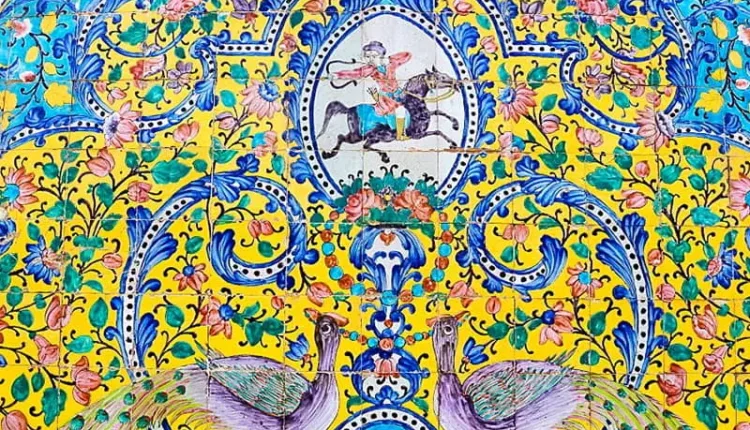
Golestan Palace: A Marvel of Tilework and Architectural Beauty
Golestan Palace is not only awe-inspiring from the outside but also mesmerizing once you step inside its stunning structures.
The intricate mirror work, especially in the Mirror Hall, will leave you in awe.
The gold decorations on the stone surfaces add another layer of beauty to Shams-ol-Emareh and the Marble Throne, which were prevalent during the Qajar era. The skill of the goldsmiths of that time is evident in these intricate details. The use of gold in the architectural decorations of Golestan Palace enhances its value and allure. Let’s explore the different sections of this remarkable palace.

Shams-ol-Emareh
The Jewel of Golestan Palace Shams-ol-Emareh, a towering structure, can be considered the centerpiece of the Golestan Palace complex and a symbol of the capital.
Naser al-Din Shah fell in love with the sky-high structures he saw during his European travels, which inspired him to commission the construction of this building. It allowed him and his wives to ascend and enjoy the panoramic views of Tehran and its surroundings.
Built-in 1905, this five-story building stood at a height of 35 meters, making it the tallest structure of its time. The use of metal in its construction marked a significant transformation in Iranian architecture. Beyond the splendid exterior, the interior of Shams-ol-Emareh boasts mesmerizing mirror work, paintings, and plasterwork, captivating every visitor.
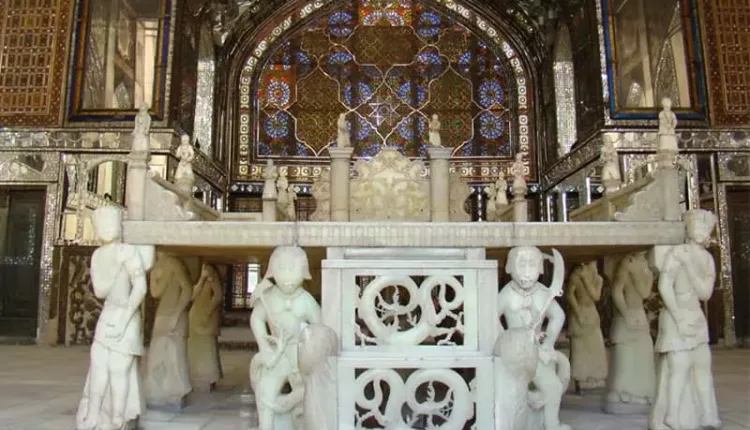
Marble Throne Pavilion
the Marble Throne Pavilion, also known as Ivane Takht-e Marmar or Divankhaneh, is the oldest historical structure within Golestan Palace, dating back to the reign of Karim Khan Zand. This pavilion shines like a gem amidst the complex, adorned with exquisite plasterwork, calligraphy, stone carving, woodwork, lattice, and mirror work.
The most beautiful part of the pavilion is the Marble Throne, which was commissioned by Fath Ali Shah. In 1822, he instructed Isfahani Stonemasons to create a yellow Yazd marble throne consisting of 65 large and small marble pieces.
The design of the throne evokes the image of the throne of King Solomon, with three demons, six angels, or humans supporting it. In addition to a dragon and two lions, verses from Mawlana Jalal ad-Din Rumi praising Fath Ali Shah are engraved on this marble masterpiece.
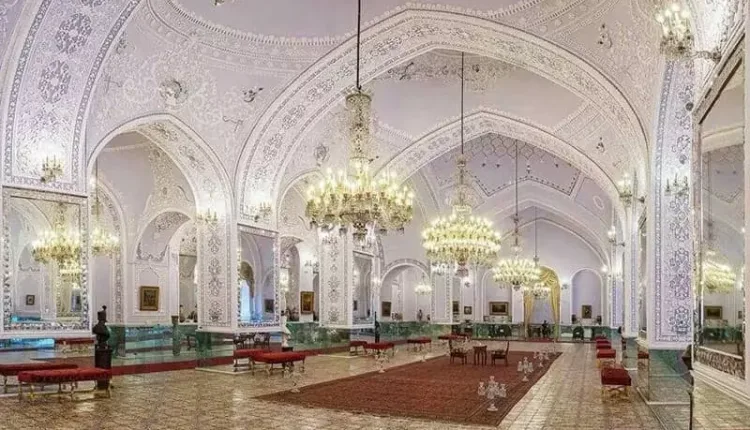
Salam Hall
Located in the northwest corner of Golestan Palace, the Salam Hall, also known as the Museum Room or the Coronation Hall, was initially constructed to create a museum.
Naser al-Din Shah was inspired by the museums he saw in Western countries and decided to establish a similar museum within this royal complex.
As a result, the old structures in this section of the garden were demolished, and the Museum Room, Pond House, and more were built. Thus, the first museum in Iran came into existence within Golestan Palace.
Interestingly, the history of photography and museum establishment in Iran dates back to the Qajar era.
The construction of the Salam Hall and other sections concluded in 1914, but the arrangement, installation of artworks, and completion of the decorations continued until 1917. It is believed that Naser al-Din Shah himself contributed to the design and layout of the museum.
Special Museum
The Special Museum is a part of the Pond House in the Salam Hall, where precious artifacts from the Qajar kings are exhibited. Some of these items were previously kept in Naser al-Din Shah’s Museum Room, having been passed down from earlier periods or received as gifts from other kings and contemporary artists, or purchased by the kings themselves.
Art Gallery Museum
Another section of the Pond House is dedicated to the Art Gallery Museum, which displays Qajar-era Iranian paintings. The museum consists of two sections: in the southern section, painted curtains from the Qajar period are showcased, featuring works by artists such as Mirza Baba Shirazi, Esma’il Jalayer, Abolhassan Khan Sani al-Dawlah, and more.
The northern section exhibits artworks by later Qajar painters, including Mahmoud Khan Saba, Kamal al-Molk, Mosavar al-Molk, and Aqa Mirza Musa. These two sections were merged in 1995 and officially opened as the Art Gallery Museum in 1997.
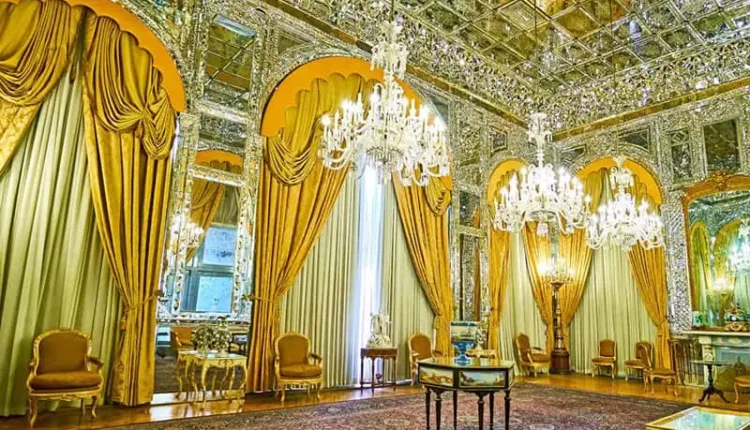
Mirror Hall
Mirror Hall is one of the famous halls of Golestan Palace, located right next to the Salam Hall. Much of its fame is attributed to the renowned painting by Kamal al-Molk depicting the Mirror Hall and Naser al-Din Shah, which took five years to complete. The intriguing aspect of this painting is the grandeur it imparts to the hall, making it appear much larger than its actual size and showcasing the artist’s skill in magnifying its splendor.
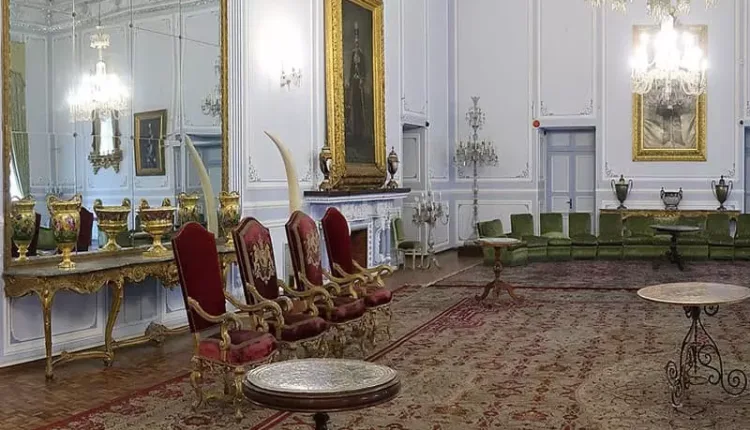
Ivory Hall
Ivory Hall is another magnificent structure within Golestan Palace, although the exact date of its construction is unknown. According to evidence, it was built before the Salam Hall and Mirror Hall.
The pinnacle of beauty in this hall can be seen in the watercolor painting by Mahmoud Khan Malek al-Shoara, created in 1907, which depicts the exterior view of the Ivory Hall. According to the painting, the Ivory Hall featured a large central space, an ivan with six columns, and a staircase.
Currently, two large elephant ivory sculptures are placed in this hall, which may explain its name. However, some believe that in the past, it was used for dining and entertaining purposes, and its correct name is “Talar Aj,” which means “the hall of hunger” in Turkish.
Gifts Hall
The DishesHall was constructed in 1965 on the remains of a Qajar-era structure. As the name suggests, it is used to house and display some of the gifts from European monarchs to the Qajar kings. The collection includes the china set from Napoleon Bonaparte’s wars, the jewelry set presented by Queen Victoria, the gift from Alexander III, the gift from Nicholas I of Russia, and more. Exploring these gifts is a delightful experience.
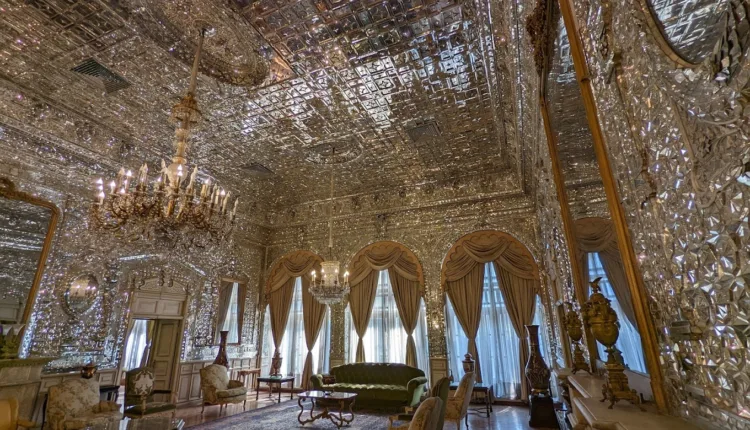
Brilliant Hall
The Brilliant Hall is renowned for its several beautifully decorated rooms with mirrorwork and chandeliers.
Before the establishment of the Brilliant Hall, there was a Crystal Hall or Palace from the time of Fath Ali Shah in its place. The Crystal Hall was demolished during Naser al-Din Shah’s reign, and the Brilliant Hall was built in its stead.
Along with the restoration during the time of Mozaffar al-Din Shah, additional exquisite decorations were added. There is an oil painting of the original Crystal Hall that exists before the restoration, which is now kept in the Salam Hall.
During Naser al-Din Shah’s era, the Brilliant Hall was used to house foreign royal gifts, and during the Pahlavi era, it served as a venue for official court parties.
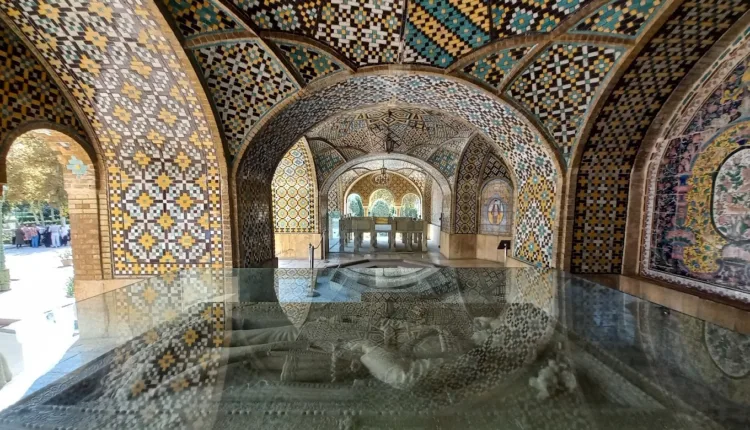
Khilwat-e Karimkhani
Located in the northwest corner of Golestan Palace, is a covered structure shaped like a three-sided ivan with columns, featuring a beautiful central pool. The significance of this building is attributed to an event during the reign of Agha Mohammad Khan Qajar. He exhumed the remains of Karim Khan Zand from his burial place in Shiraz and transferred them to this location. This was because at that time, it was along the daily route of the Shah, allowing him to trample over Karim Khan’s grave.
During Naser al-Din Shah’s era, this area was transformed into a small courtyard known as “Hayat-e Karimkhani,” where the king would take rest. With the advent of the Pahlavi era, Karim Khan’s bones were relocated to Qom.
There are two significant artifacts in Khilwat-e Karimkhani that have special importance. The tombstone of Naser al-Din Shah, which was originally transferred from the holy shrine of Hazrat Abdul Azim in the early days of the Iranian Islamic Revolution and eventually placed in Khilwat-e Karimkhani. The stone bears the image of Naser al-Din Shah with a sword in hand.
Additionally, the Marble Throne of Fath Ali Shah is also located in this area, although it was previously situated in another part of the palace and later moved to Khilwat-e Karimkhani during the second Pahlavi era.
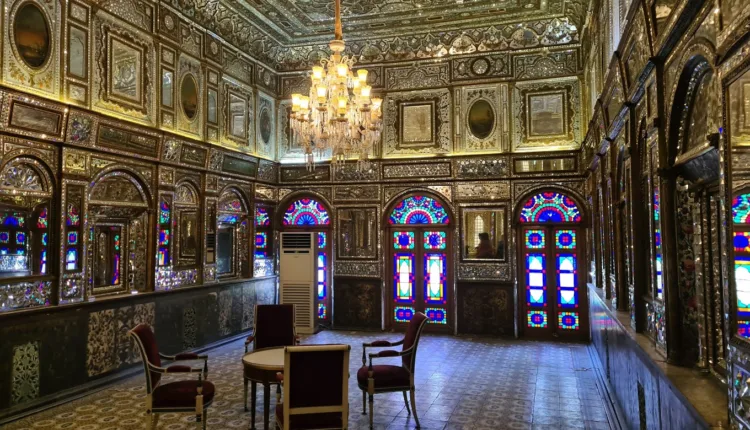
The Windcatcher Mansion
The Windcatcher Mansion, situated in the southern part of the Golestan Palace complex, was built during the reign of Fath Ali Shah and underwent significant changes during Naser al-Din Shah’s era, resulting in its current form.
Apart from the beautiful archways and columns, the upper rooms, balconies, and passageways of this mansion are noteworthy.
It showcases extraordinary decorations, including painting, mirror work, plasterwork, woodcarving, and colorful tile work. The most captivating section of the mansion is the Shah Neshin Hall with its nine arches, intricately carved marble latticework, painted spiral columns, seven-color marquetry flooring, wall paintings, and ceiling, all of which captivate the attention of any beholder.
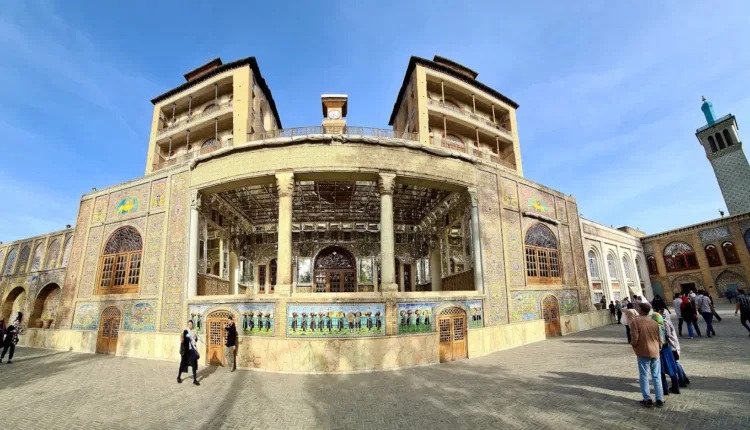
Photography Museum
The Diamond Hall
The Diamond Hall is one of the ancient sections of Golestan Palace located after the Windcatcher Mansion, and it is named “Diamond” due to the interior mirror works. The mirror mosaics in the southern section of the hall are remnants from the time of Fath Ali Shah, making them the oldest part of this building.
The hall was constructed by order of Fath Ali Shah, although modifications were made to its decorations and appearance during Naser al-Din Shah’s reign. The hall is comprised of various corridors, upper rooms, and niches, with a large pool located underneath.

The Abyaz Palace
The Abyaz Palace is located in the southwest corner of the Golestan Complex. It was designed and built to showcase the valuable items sent by Sultan Abdul Hamid, the Ottoman Sultan, to Naser al-Din Shah. After its construction, Naser al-Din Shah ordered that the palace be painted white, following the European architectural style, and white marble be used for the stairs. Due to these features, the new building in Golestan became known as the White Palace.
Following the arrangement of the Ottoman Sultan’s belongings, this magnificent hall was named the Abdul Hamid Hall. The White Palace served as the workplace for the Prime Minister and the Cabinet meetings of subsequent governments, until it was converted into a fine arts exhibition space in 1953.
Eventually, in 1968, it was transformed into the Museum of Anthropology. The museum showcases the clothing of the Qajar men and women and garments from various regions of Iran. It is considered one of the richest and oldest ethnographic museums in Iran.
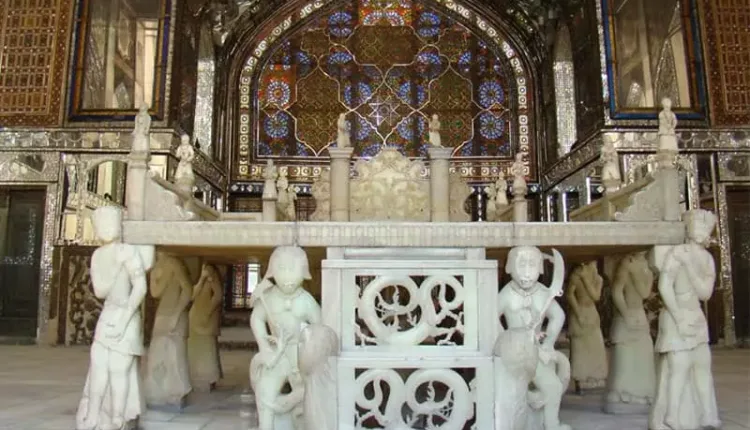
Golestan Palace Library
The Golestan Palace Library consists of two sections: the manuscript library and the printed book library.
The history of the manuscript library and its collection dates back to the early 19th century when it was established by Fath Ali Shah Qajar and named the Shahanshahi Library.
The printed book library began its activities during the second Pahlavi era and was initially located on the first floor of the White Palace.
However, in 2005, it was relocated to a separate space with an area of over 93 square meters in the northeast corner of the palace. The library contains over 700,000 historical, artistic, and lithographic books, of which approximately 2,500 are historical books. Therefore, the Golestan Palace Library is considered a valuable source of Qajar-era books.
The Golestan Palace Library is not like other public libraries, and access to it is limited to students, professors, writers, and researchers who provide a letter of introduction.
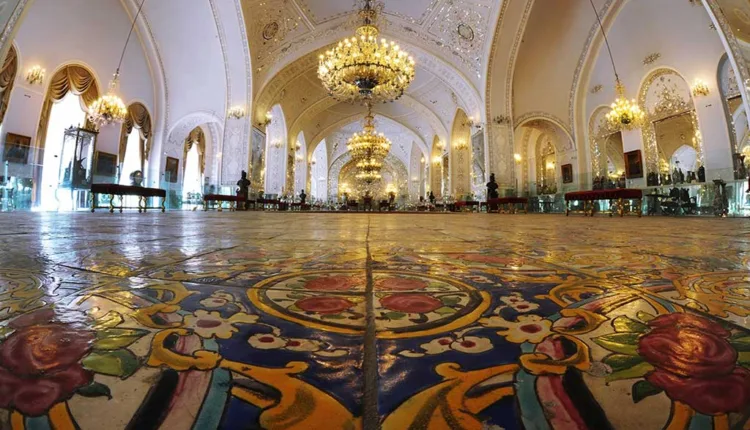
Frequently Asked Questions
Where is Golestan Palace located?
Golestan Palace is one of the most famous tourist attractions in Tehran, with a history dating back several decades before the Qajar era, spanning over 440 years. It is located on 15 Khordad Street, north of Arg Square.
What are the visiting hours of Golestan Palace?
Golestan Palace is open from 9 am to 7 pm (ticket sales until 5:15 pm). The palace complex is closed on the anniversary of Imam Khomeini’s demise (14 Khordad), the martyrdom of Imam Ali (21st of Ramadan), Tasua and Ashura of Imam Hussein (9th and 10th of Muharram), Arbaeen of Imam Hussein (20th of Safar), the demise of Prophet Muhammad (28th of Safar), the martyrdom of Imam Jafar Sadiq (25th of Shawwal), and Nature Day (13th of Farvardin).
What is the ticket price for Golestan Palace?
The entrance fee for Golestan Palace is 46,000 Iranian Rials per visitor (as of 2023).
The entrance cost for foreigners is considerably higher.
What are the sections of Golestan Palace?
Golestan Palace is a historical complex consisting of several palaces and royal halls, including Shams al-Amareh Palace, Takht-e Marmar Hall, Golestan Palace Courtyard, Special Palace, Khosrow Khan’s Private Quarters, Karim Khan’s Retreat, Badgir Mansion, Almas Hall, and the White Palace, all situated within a garden.

